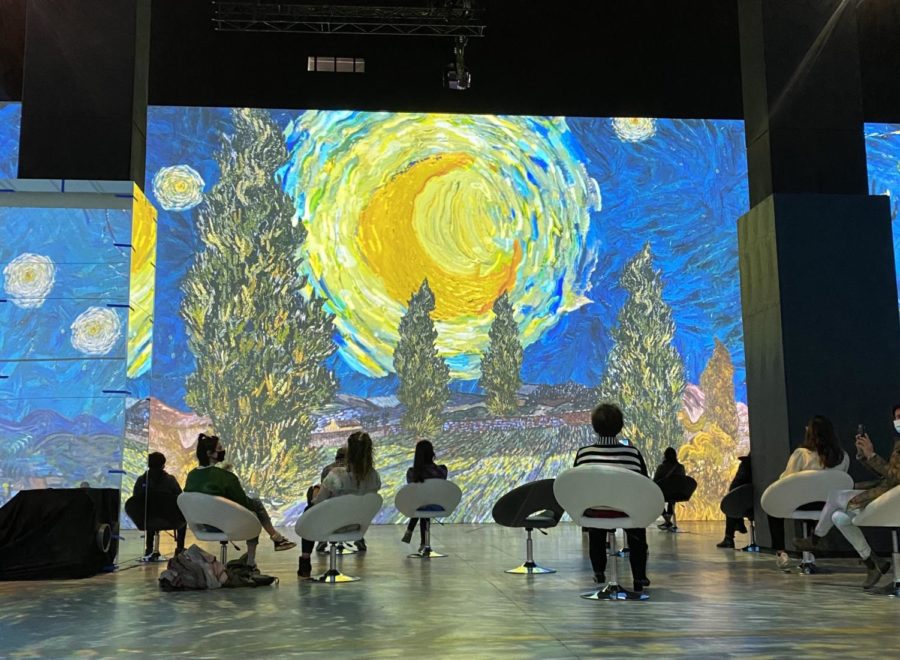Observers at the Immersive Van Gough exhibit in Toronto
Physical Art in a Digital Age
November 22, 2021
Technological advancements have been affecting the art scene for over a century. The invention of photography made art more accessible. Portraits became cheaper and faster, no longer just a luxury for the upper-class. The demand and interest in realism dwindled. Artists, once tethered to the principle that art and realism were synonymous, slowly became free of these constraints. This creative freedom led to the development of revolutionary styles such as impressionism, expressionism, surrealism and more.
More recently, the widespread use of cell phones has changed the way we consume artwork. People use Google Images and Wikipedia pages in lieu of a gallery or museum visit. Those who do make the trip often take advantage of the relaxed no photography rules. In moderation, this can have positive effects. If somebody shares a photo from a gallery on social media, it may encourage others to visit. It also helps keep the social aspects of art culture alive. However, galleries often become congested with people who simply wait their turn to take a photo and then move on.
People ask me what our biggest competition is. It’s not the Guggenheim; it’s not the Museum of Natural History. It’s Netflix. It’s Candy Crush.
— Sree Sreenivasan, former chief digital officer for the Metropolitan Museum of Art
In an interview with The Atlantic Sree Sreenivasan, the former chief digital officer for the Metropolitan Museum of Art, discussed how the use of cellphones changes the dynamic of museums. “People ask me what our biggest competition is,” says Sreenivasan, “It’s not the Guggenheim; it’s not the Museum of Natural History. It’s Netflix. It’s Candy Crush.” As a result, many galleries and museums are embracing the benefits of cell phones. Many of these cultural institutions have experimented with virtual reality exhibitions and digital activities within their facilities.
Art-lovers can expect to see more of this consumer-attracting digitization in the coming years. As with any industry or form of expression, it adapts to fit the consumer’s needs. The message will still be that of the artist or the institution, but it will always be communicated on our terms.

